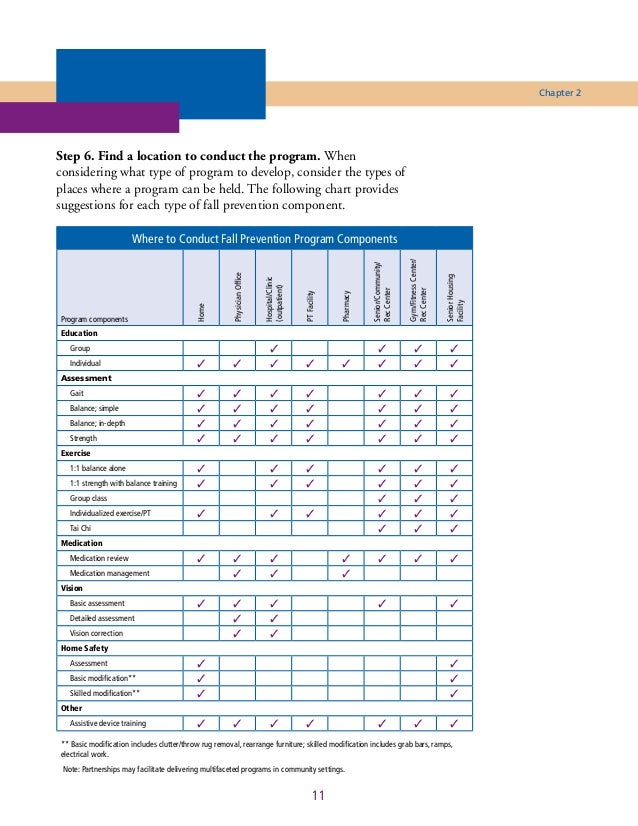Table of Content
Some of the drugs that increase the risk of falling include anti-depressants, tranquilizers, fluid tablets, and sleeping. The falls are mostly experienced when the elderly are introduced to medication. The risk of falling increases when the older person is prescribed to multiple medications. Even though a nursing home cannot prevent every fall, it should have a comprehensive fall management program. This program helps staff identify and intervene to prevent most falls by managing intrinsic risk factors and addressing external factors.
Most of the nursing homes use physical restraint as an intervention measure to the patients experiencing falls. Physical restraint does not lower the risk of falls and full injuries. It instead weakness the body muscles and reduces physical function that, in turn, increases the risk of a fall. Caregivers should be discouraged from using physical restraint and encourage physical exercise among the elderly population in nursing homes. Nursing homes are also encouraged to create a safe environment for the elderly persons.
Nursing Home Falls and Fractures
However, these factors can be managed to dramatically reduce the risk of a resident falling. Patients who are unfamiliar with the placement of furniture and equipment in their room are more likely to fall. Interdisciplinary teamwork is essential for success in the FMP and the selection of members is an important first step. The falls team can function in collaboration with or as part of a team that addresses residents at high risk for multiple conditions, including falls.
Research shows that when one of the four rails is down, the patient is less likely to fall. Refer the client to the Home Nursing Agency for a home evaluation. By submitting, you agree to our privacy policy, terms of useand to be contacted by a trusted law firm to evaluate your claim.
Nursing Home Falls – Accidents and Protocols
The CDC has found that the use of physical restraints can increase a patient’s risk of fall-related injuries. Despite the fact that restraints increase muscle weakness and reduce physical function, around 10% of nursing homes still use them. Falls Nursing Assistant is responsible for inspection of the environment and equipment and acts as a leader among frontline staff in support of the falls nurse. This person should be a senior level certified nursing assistant who works well with peers and is an informal leader on his or her unit. In most average size nursing facilities, the selection of two nursing assistants for the falls team is sufficient while in larger facilities, 3-4 nursing assistants are needed.
Nursing home injuries from falls are usually caused by a combination of factors. Sadly, seniors are 4x more likely to die after a fall in a nursing home compared to seniors who live in the community. Someone with weakened physical and immune function who has suffered a serious injury doesn’t just have trouble healing from the injury itself; there are additional risks that occur while recovering. A fall can set off a dangerous chain reaction in an elderly person.
Are your writers competent enough to handle my paper?
The use of gait belts by all healthcare professionals can promote safety by helping patients transfer from bed to chair. Canes, walkers, and wheelchairs can provide the patient with greater stability and balance when ambulating. The morbidity, mortality, and economic burden resulting from patient falls pose serious risk management challenges facing the healthcare industry. According to the Centers for Disease Control and Prevention , between 50-75% of nursing home residents fall each year.
Falls, as a health risk to the elderly in nursing homes, has been a significant public health concern. The falls are often caused by several issues, including prolonged standing pain, fictional impairment, and disability in the elder section of the population. There is a need for proper to have put in place an action plan to reduce the risks of falls and improve the quality of life for senior citizens. The elderly deserve sound health care systems at their homes to help them live a deserving life at their advanced age. It may appear that falling is a normal occurrence when you get older, but it is not. It is important to work together with nursing homes and the affected population to ensure that the risks of falls are reduced.
Implementation and evaluation of a nursing home fall management program
Fall prevention and injury protection for nursing home residents. Bring LPNs and CNAs from units of the residents who fell to discuss interventions. Review information on the Tracking Record for Improving Patient Safety.
For beds with split side rails, leave at least one of the rails at the foot of the bed lowered. Ensure that the family is aware of issues related to safety and the risk of falls. If you wish to take further action, you can file a nursing home fall lawsuit with an experienced law firm. It is vitally important that nursing homes put the time, energy, and money into protecting their patients from this common danger. Even if a fall doesn’t result in serious physical injury, many patients face mental health consequences.
1 out of every 5 falls among seniors results in a serious injury. Falls are also one of the leading causes of hospitalization among seniors 65 and older. Nurses also have an important role in educating patients, families and caregivers about fall prevention throughout the continuum of care.

Most of the older adults say that foot problems reduce their mobility. The foot problems are shared among older people, mostly related to medical conditions. Some of the foot disorders include skin conditions, diabetes, arthritis, toenail problems, and circulatory problems on the lower leg. Unattended leg problems increase the risks of falls among the aged population. Some of the effects of foot problems include lack of sensation, pain in the foot joints, overgrown toenails, and ulcers.
This is twice the rate at which other older adults fall when living outside of nursing homes. The FMP Self-Assessment tool will enable staff to identity strengths and weaknesses in key areas. It should be completed before starting the program in order to develop a facility-specific plan for program implementation. The self-assessment should also be completed after program implementation to evaluate progress and identify further process improvement needs. In particular, completing the chart audit section of the self-assessment quarterly will detect which care processes are being performed and documented adequately and which need improvement.

Even for a young person who has visual problems will experience mobility problems. Visual problems affect the ability of people to see far and clearly. It makes it easy for them to fall since they cannot contrast between objects and backgrounds. Medical conditions such as Glaucoma, cataract, and progressive degeneration of the retina also reduces the visibility among the elderly. A nurse coordinator who has clinical authority for running and managing the program.
Research Findings & Reports
The nurse oversees all steps in the Falls Response process and coordinates implementation of individualized care plans. The nurse ensures the education and training of all staff, families and residents and works with the medical director to inform all primary care providers of the program and their role in it. Some of the medication prescribed has been perceived to increase the risk of falling. Studies show that the side effects of these drugs cause drowsiness and dizziness that increase chances of falling among the elderly.

Physical activities maintain muscle health and improve joint mobility that reduces stiffness. It also enhances body balances, coordination, and reduces the risk of adding weight. The type of clothing and footwear that is worn by the senior people also contributes to the dangers of a fall. Unsuitable footwear and apparel cause foot problems that increase the chances of falling.

No comments:
Post a Comment